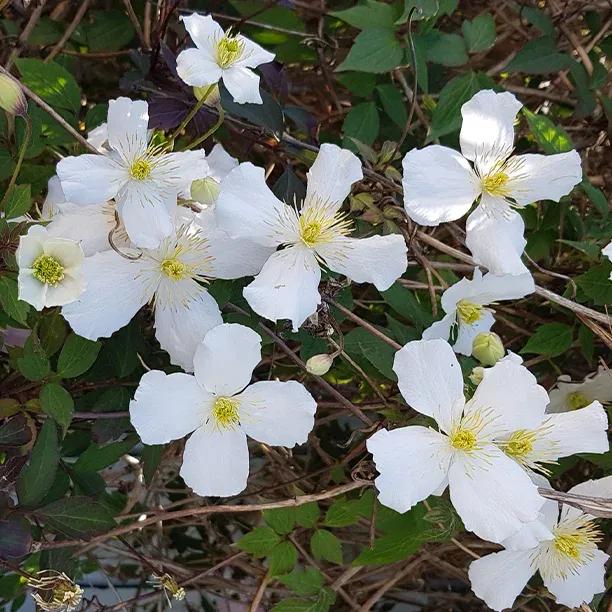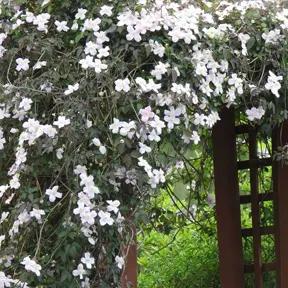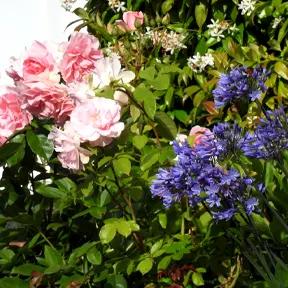White Anemone Clematis Plants
Clematis montana var. grandiflora
- Pure white, cruciform flowers. Profuse.
- Subtle fragrance
- Flowers May - June
- Height and spread to 10m x 4m
- Pruning Group 1
- Best Clematis for Harsh Sites & Coast
- RHS Award of Garden Merit
Recommended extras
Description
Clematis Montana 'Grandiflora' Plants
'Grandiflora' produces a dazzling show of pure white blooms that really cover the plant in late spring (May-June), with a smaller second round later in good conditions. Flowers (up to 7cm in diameter) are simple and elegant, four white petals arranged in cruciform around yellow anthers at the centre.
The variety is listed as unscented, but in full sun a delicate fragrance can be detected. A vigorous and very hardy perennial, this deciduous climber is perfect for exposed sites. Can reach a height of 10-12m.
As a white flowering variety, Grandiflora does not fade in the sun like colourful varieties.
For more varieties, see our full range of Clematis.
Growing 'Grandiflora' Clematis
Montana 'Grandiflora' will perform best with its roots in deep, moist, well shaded soil and its head in the sun. It will tolerate any aspect and takes exposed sites and coastal breezes in its stride. Perfect for smothering fences or walls where nothing else will grow with a beautiful screen of white blossom. Give it plenty of room, it has long legs.
Carries the prestigious RHS Award of Garden Merit.
Features:
- Flower colour: Pure white with yellow anthers at centre
- Flower shape: 4 petals in cruciform arrangement
- Fragrance: Subtle - only noticeable when flowers are in full sun
- Repeating: Occasionally in late summer
- Approximate flowering season: May - June
- Final height and spread: 10m x 4m
- Pruning group: 1
- RHS Award of Garden Merit
Look out for:
Aphids and caterpillars are fond of the young shoots
All clematis can be affected by Clematis slime flux, a bacterial infection of damaged tissue that can kill large specimens almost overnight. Can be pruned out if spotted early.
Blooms can develop a greenish tint in shade/cold weather.
Trivia:
Introduced from North India by Mr Veitch around 1844, it was awarded the RHS Award of Garden Merit in 1993. Chartwell House, the family home and garden of Sir Winston Churchill, has a fine display of Grandiflora.
Images supplied by Clematis on the Web.
Planting Instructions
How to grow Clematis Montana 'Grandiflora':
Clematis Montana 'Grandiflora' can be grown easily following the Clematis planting notes.It's Summer Planting Season 2025

Pot Grown & Plug Plants Delivered

Direct from the Nursery Value

No more broken plants in the post!








